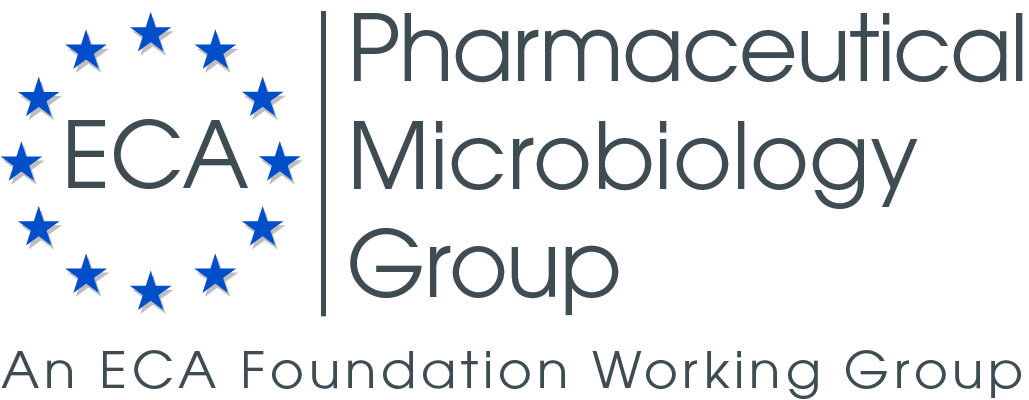|
|
|
 |
11. Identification Methods
|
|
|
|
-
Equivalence of quality control strains of microorganisms used in the compendial microbiological tests: are national culture collection strains identical? - more
-
Rapid Whole-Genome Sequencing for Detection and Characterization of Microorganisms Directly from Clinical Samples - more
-
Label-free identification of individual bacteria using Fourier transform light scattering - more
-
Classification of Bacteria using FT-IR - more
-
Use of the Bruker MALDI Biotyper for identification of molds in the clinical mycology laboratory. - more
-
Comparison of phenotypic and genotypic techniques for identification of unusual aerobic pathogenic gram-negative bacilli. - more
-
Identification of coryneform bacterial isolates by ribosomal DNA sequence analysis. - more
Cundell AM, Chatellier S, Schumann P, Lilischkis R.
PDA J Pharm Sci Technol.
Abstract
The pharmacopoeias list a number of microorganisms to be used in the compendial microbiological tests for confirming the growth-promoting, indicative, and inhibitory properties of the media and demonstrating the suitability of the test for a specific test article. Major national culture collections are specified as the sources for these test strains based on their history of deposition and maintenance and use in the compendial tests. Using these microorganisms, it has long been assumed that these strains are interchangeable and that sourcing the strains from different culture collections has no impact on the result of the media quality control and method qualification tests. In order to evaluate whether this assumption is correct and to add more certainty to the procedures, we investigated whether there are detectable differences among isolates of the same strain sourced from different culture collections. Using various phenotypic and genotypic identification and strain typing methods, nine major pharmacopoeial species were analyzed. As expected, most of the species showed very uniform patterns across the isolates, indicating that the strains were indeed identical. Surprisingly, the strains of Salmonella enterica subsp. enterica serotype abony showed distinct differences at both the genotypic and the phenotypic level, suggesting that the strains sourced from the different culture collections were not identical strains, or that they have undergone detectable genetic shift from the time they were derived from the original depositor. Irrespective of the level of genotypic or phenotypic homology identified here, there are no practical consequences on their performance in compendial assays. It is concluded that the compendial strains investigated in this study are indeed equivalent and will perform identically in compendial tests, making it safe to base pharmaceutical quality control procedures on the strains sourced from any of the recognized national culture collections.
|
|
|
Henrik Hasman, Dhany Saputra, Thomas Sicheritz-Ponten, Ole Lund, Christina Aaby Svendsen, Niels Frimodt-Møller and Frank M. Aarestrup
http://jcm.asm.org/content/52/1/139#ref-list-1
ABSTRACT
Whole-genome sequencing (WGS) is becoming available as a routine tool for clinical microbiology. If applied directly on clinical samples, this could further reduce diagnostic times and thereby improve control and treatment. A major bottleneck is the availability of fast and reliable bioinformatic tools. This study was conducted to evaluate the applicability of WGS directly on clinical samples and to develop easy-to-use bioinformatic tools for the analysis of sequencing data. Thirty-five random urine samples from patients with suspected urinary tract infections were examined using conventional microbiology, WGS of isolated bacteria, and direct sequencing on pellets from the urine samples. A rapid method for analyzing the sequence data was developed. Bacteria were cultivated from 19 samples but in pure cultures from only 17 samples. WGS improved the identification of the cultivated bacteria, and almost complete agreement was observed between phenotypic and predicted antimicrobial susceptibilities. Complete agreement was observed between species identification, multilocus sequence typing, and phylogenetic relationships for Escherichia coli and Enterococcus faecalis isolates when the results of WGS of cultured isolates and urine samples were directly compared. Sequencing directly from the urine enabled bacterial identification in polymicrobial samples. Additional putative pathogenic strains were observed in some culture-negative samples. WGS directly on clinical samples can provide clinically relevant information and drastically reduce diagnostic times. This may prove very useful, but the need for data analysis is still a hurdle to clinical implementation. To overcome this problem, a publicly available bioinformatic tool was developed in this study.
|
|
|
YoungJu Jo, JaeHwang Jung, Min-hyeok Kim, HyunJoo Park, Suk-Jo Kang, and YongKeun Park
https://www.osapublishing.org/oe/abstract.cfm?uri=oe-23-12-15792
Abstract
Rapid identification of bacterial species is crucial in medicine and food hygiene. In order to achieve rapid and label-free identification of bacterial species at the single bacterium level, we propose and experimentally demonstrate an optical method based on Fourier transform light scattering (FTLS) measurements and statistical classification. For individual rod-shaped bacteria belonging to four bacterial species (Listeria monocytogenes, Escherichia coli, Lactobacillus casei, and Bacillus subtilis), two-dimensional angle-resolved light scattering maps are precisely measured using FTLS technique. The scattering maps are then systematically analyzed, employing statistical classification in order to extract the unique fingerprint patterns for each species, so that a new unidentified bacterium can be identified by a single light scattering measurement. The single-bacterial and label-free nature of our method suggests wide applicability for rapid point-of-care bacterial diagnosis.
|
|
|
D. Lefier, INRA-URTAL-Poligny, France,
B. Beccard, Thermo Fisher Scientific, France,
M. Bradley, Thermo Fisher Scientific, Madison, WI, USA
http://images.alfresco.advanstar.com/alfresco_images/pharma/2014/08/21/f4db15c6-73a5-48a0-b669-ddee3b5dec06/article-469984.pdf
The classification of bacteria is generally based on the morphology and biochemical reactions of the bacteria. However, these measurements are time consuming, and require training and expertise. Infrared (IR) spectroscopic measurements of bacteria followed by a formal chemometrics analysis could offer advantages of speed and consistency. Such an analysis was first tried in the late 1950‘s, with some success, but with limitations imposed both by the instrumentation and by the post-processing tools available.
The IR analysis of bacteria underwent resurgence in the 1980‘s with the advent of Fourier transform infrared (FT-IR) instruments. The higher signal to noise and generally better performance, coupled with significant advances in computing power, made the application to bacterial analysis feasible. Hopkinson et al., and Naumann et al. were pioneers (1988) in using FT-IR for identification and differentiation of microorganisms. Recent work has shown the method is effective with pathogenic and non-pathogenic bacteria.
The food industry, especially groups like cheese producers, has a high interest in bacterial screening. The basic concern is that the correct strain of bacteria, and no other, is present in a food product. Europe is leading a push for tighter regulations that would require food producers to increase the sampling frequency. The potential speed and consistency advantages of FT-IR analyses are thus of great interest.
The standard infrared methodology is based on transmission of light through a bacteria sample dried onto a ZnSe window. Regardless of sample preparation methods, only about 50 samples per day can be processed. However, Thermo Scientific offers a powerful set of high-throughput screening (HTS) hardware and software tools which could greatly accelerate this rate, helping meet the needs of the increased sample load. The throughput improvement is largely realized through automation of the data collection and analysis.
|
|
|
Schulthess B, Ledermann R, Mouttet F, Zbinden A, Bloemberg GV, Böttger EC, Hombach M
http://www.ncbi.nlm.nih.gov/pubmed/24850347
Abstract
Matrix-assisted laser desorption ionization-time of flight mass spectrometry (MALDI-TOF MS) is increasingly used for the identification of bacteria and fungi in the diagnostic laboratory. We evaluated the mold database of Bruker Daltonik (Bremen, Germany), the Filamentous Fungi Library 1.0. First, we studied 83 phenotypically and molecularly well-characterized, nondermatophyte, nondematiaceous molds from a clinical strain collection. Using the manufacturer-recommended interpretation criteria, genus and species identification rates were 78.3% and 54.2%, respectively. Reducing the species cutoff from 2.0 to 1.7 significantly increased species identification to 71.1% without increasing misidentifications. In a subsequent prospective study, 200 consecutive clinical mold isolates were identified by the MALDI Biotyper and our conventional identification algorithm. Discrepancies were resolved by ribosomal DNA (rDNA) internal transcribed spacer region sequence analysis. For the MALDI Biotyper, genus and species identification rates were 83.5% and 79.0%, respectively, when using a species cutoff of 1.7. Not identified were 16.5% of the isolates. Concordant genus and species assignments of MALDI-TOF MS and the conventional identification algorithm were observed for 98.2% and 64.2% of the isolates, respectively. Four erroneous species assignments were observed using the MALDI Biotyper. The MALDI Biotyper seems highly reliable for the identification of molds when using the Filamentous Fungi Library 1.0 and a species cutoff of 1.7. However, expansion of the database is required to reduce the number of nonidentified isolates.
|
|
|
Tang YW, Ellis NM, Hopkins MK, Smith DH, Dodge DE, Persing DH.
http://www.ncbi.nlm.nih.gov/pubmed/9817894
Abstract
Rapid and accurate identification of bacterial pathogens is a fundamental goal of clinical microbiology, but one that is difficult or impossible for many slow-growing and fastidious organisms. We used identification systems based on cellular fatty acid profiles (Sherlock; MIDI, Inc., Newark, Del.), carbon source utilization (Microlog; Biolog, Inc., Hayward, Calif.), and 16S rRNA gene sequence (MicroSeq; Perkin-Elmer Applied Biosystems Division, Foster City, Calif.) to evaluate 72 unusual aerobic gram-negative bacilli isolated from clinical specimens at the Mayo Clinic. Compared to lengthy conventional methods, Sherlock, Microlog, and MicroSeq were able to identify 56 of 72 (77.8%), 63 of 72 (87.5%), and 70 of 72 (97.2%) isolates to the genus level (P = 0.002) and 44 to 65 (67.7%), 55 of 65 (84.6%), and 58 of 65 (89.2%) isolates to the species level (P = 0.005), respectively. Four Acinetobacter and three Bordetella isolates which could not be identified to the species level by conventional methods were identified by MicroSeq. In comparison to the full 16S rDNA sequences, the first 527 bp provided identical genus information for all 72 isolates and identical species information for 67 (93.1%) isolates. These data show that MicroSeq provides rapid, unambiguous identification of clinical bacterial isolates. The improved turnaround time provided by genotypic identification systems may translate into improved clinical outcomes.
|
|
|
Tang YW, Von Graevenitz A, Waddington MG, Hopkins MK, Smith DH, Li H, Kolbert CP, Montgomery SO, Persing DH.
http://www.ncbi.nlm.nih.gov/pubmed/10747168
Abstract
Identification of coryneform bacteria to the species level is important in certain circumstances for differentiating contamination and/or colonization from infection, which influences decisions regarding clinical intervention. However, methods currently used in clinical microbiology laboratories for the species identification of coryneform bacteria are often inadequate. We evaluated the MicroSeq 500 16S bacterial sequencing kit (Perkin-Elmer Biosystems, Foster City, Calif.), which is designed to sequence the first 527 bp of the 16S rRNA gene for bacterial identification, by using 52 coryneform gram-positive bacilli from clinical specimens isolated from January through June 1993 at the Mayo Clinic. Compared to conventional and supplemented phenotypic methods, MicroSeq provided concordant results for identification to the genus level for all isolates. At the species level, MicroSeq provided concordant results for 27 of 42 (64.3%) Corynebacterium isolates and 5 of 6 (83.3%) Corynebacterium-related isolates, respectively. Within the Corynebacterium genus, MicroSeq gave identical species-level identifications for the clinically significant Corynebacterium diphtheriae (4 of 4) and Corynebacterium jeikeium (8 of 8), but it identified only 50.0% (15 of 30) of other species (P < 0.01). Four isolates from the genera Arthrobacter, Brevibacterium, and Microbacterium, which could not be identified to the species level by conventional methods, were assigned a species-level identification by MicroSeq. The total elapsed time for running a MicroSeq identification was 15.5 to 18.5 h. These data demonstrate that the MicroSeq 500 16S bacterial sequencing kit provides a potentially powerful method for the definitive identification of clinical coryneform bacterium isolates.
|
|
|
|



